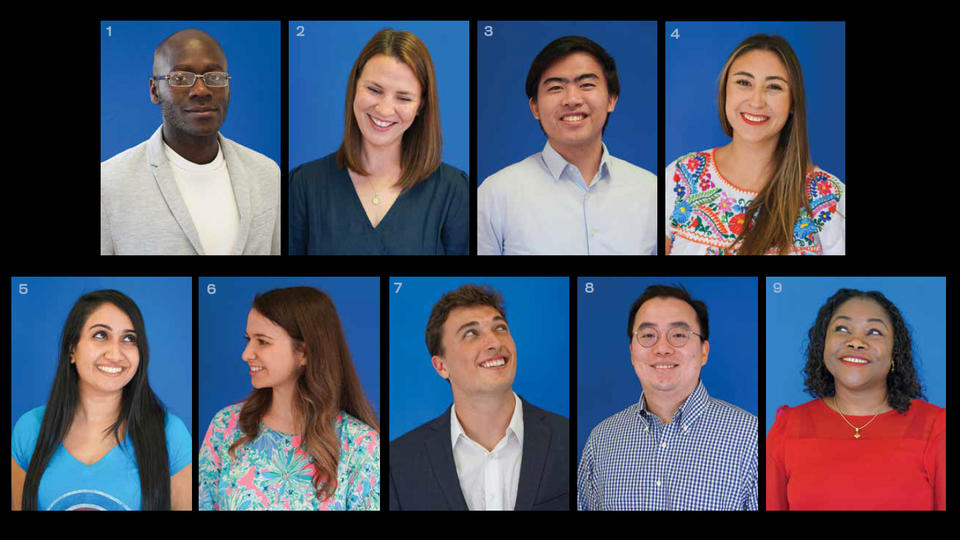
Major Transition

There is no doubt that the energy transition will happen, but we’re all still figuring out how to navigate it. Nicola Secomandi, the Houston Endowment Professor of Management – Operations Management, is engaged in related research and teaching to help businesses prepare.
Governments and businesses will make crucial decisions about the energy transition in the coming decades — and many of those decisions will hinge on research and current best practices. In July, Nicola Secomandi assumed a new role at Rice Business: senior advisor to the dean on energy transition.
In this role, Secomandi will conduct new research on the energy transition process and will teach rigorous, practical and relevant topics related to the transition. He will also join others at Rice Business, including Linda Capuano, professor in the practice of energy management and advisor to the dean on energy initiatives, in participating in — and adding to — the global conversation and thought leadership on the energy transition.
Here, Secomandi, who came to Rice Business from Carnegie Mellon University’s Tepper School of Business a year ago, discusses his new role, how he hopes to make an impact at Rice Business and beyond, and the complicated challenges ahead.
Since Rice Business is located in the energy capital of the world, do you agree that we are in a unique position to examine and influence the ways companies are making decisions around the transition?
Indeed, energy and Houston go hand in hand. Organizations and companies in the Houston area are actively engaged in the energy transition. Oil and gas firms have long been key constituencies in our state. They are currently engaged in investigating low carbon solutions — for instance, supplementing their operations with carbon capture, use and storage. As another example, local stakeholders have identified the Houston area as an ideal candidate for a global clean hydrogen hub.
I am fortunate to be involved with our MBA program’s energy and operations curricula, for which I’ve developed and delivered an elective course on managing energy assets. Because several of our MBA students work in, or will join, energy companies, this course is a two-way dialogue. I can learn from students about pressing business challenges that energy companies face. Students can learn how to address, in a structured way, both ongoing and future business issues. There is always a useful tension between addressing current challenges and preparing to solve future problems. My course is designed to help facilitate that kind of critical thinking.
In addition, events this year will focus on the energy transition. The Rice Alliance for Technology and Entrepreneurship organizes the Energy Tech Venture Forum, which brings together energy venture capitalists, investors and entrepreneurs. This year its attention will be on technologies and initiatives central to the energy transition. The Rice Energy Finance Summit will also showcase the energy transition. Rice Cleantech Innovation Competition, a student contest, will as well. Participating in these events is a useful way to learn about the latest innovations that are taking place — or will take place — in industry.
Talk to us about your work at Carnegie Mellon. How will that work in energy influence your work at Rice Business?
Most of my energy-related work so far has been on energy storage — mainly natural gas in underground caverns, but also liquefied natural gas at regasification terminals and electricity in batteries, both stand-alone and in conjunction with wind energy generation. Further, I have worked on natural gas production and transportation, including technology adoption and deployment, and more recently on biorefineries.
Carnegie Mellon has a culture of engaging in research focused on important real-world problems; that is, the school takes a problem-solving approach. For example, my energy work is grounded on the operations of merchant energy trading companies, a business that I learned by working directly in the field after my Ph.D. The same problem-solving approach will continue to shape my work at Rice Business.

Everyone discusses the energy transition, but the issues are complex and ever evolving. Most people don’t know a whole lot about the best ways to move forward. Where do we start?
The end goal is clear: To decarbonize our society on a global scale. What is unclear are the specific paths different companies and governments will take to get there. The obvious starting point for me is learning what organizations are doing currently. The transition to a world in which energy will be predominantly clean will take decades, so it’s important that we engage in this process now.
During the pandemic, you spent a great deal of time learning all you could about the ways companies and organizations are approaching the energy transition. In fact, you’ve written a paper on what you found. What can you tell us about the current practices out there?
Yes, I spent a substantial amount of time reading reports by consulting companies and government agencies. I also read about projects that firms are carrying out or are thinking about starting. This activity has given me a broad view on the status quo.
Consulting firms and government agencies are actively engaged in formulating global decarbonization strategies. These strategies are developed with particular assumptions about climate change goals. For instance, they analyze how the balance between fossil fuels and renewable energy sources must shift over time to align with a target rise in temperature. These projections offer companies concrete examples of what needs to happen to achieve these goals.
The challenge for energy and other companies is to decide what to do going forward in terms of actual projects for specific assets. In energy production, there is substantial interest and substantial activity related to carbon capture, use and storage; sustainable fuels; wind and solar; flexible power-generation assets; batteries; long-duration energy storage; and hydrogen.
Bringing all these projects to fruition will require managing massive investments, adopting known and emerging technologies, as well as developing new ones. Two key aspects of the clean energy transition are: one, integrating assets that use current and novel technologies; and two, adapting existing assets to incorporate new technologies. The change from old to new energy systems cannot happen instantaneously. Thus, the world cannot go from 80% fossil fuels to 80%-plus clean energy in a single year. So, existing and new assets or technologies will coexist for some time. Further, reusing old facilities when adopting new technologies can be useful (e.g., repurposing oil refineries into biorefineries).
From your research, are there companies that seem to be at the forefront of the thinking behind the transition? What are they doing that puts them ahead?
Energy and other companies are actively driving the transition. It is common for businesses to rely on valuable insights and expertise offered by consulting companies, but some benefit from collaborations with academics. Every company is grappling with the future of energy. But those who lead are operating with a more sophisticated level of decision making based on data and structured analysis, possibly based on collaborations with academics.
La Poste, the French postal operator, is an early example of practice and academic collaboration driving energy transition business decisions. In 2010, this company conducted a study to decide the mix of diesel and electric trucks in its future fleet. At a high level, this approach entailed determining and comparing the projected total cost of ownership (TCO) of using each of two types of technologies: the then-current non-environmentally friendly technology — diesel trucks — and the then-emerging environmentally friendly one — electric trucks. The analysis showed that the TCO for the non-environmentally friendly technology was initially lower than the TCO for the clean one, but it was forecast to increase, whereas the other one was forecast to decrease. The company should have abandoned the old technology and adopted the new one when the two TCOs were projected to cross. In this application, there was very little uncertainty about when this crossing was expected to occur. Research helped the company determine in 2010 that it should have started replacing expiring leases for diesel trucks with new leases for electric trucks in early 2015, which is what La Poste did.
An analogous approach has relevance to making various energy transition decisions. Specifically, some assets that employ non-environmentally friendly technologies may currently be cheaper to operate than assets that are configured to use clean or cleaner technologies. However, the cost of running the former assets will increase due to their negative environmental impact, whereas the cost of running the latter ones will decrease because of both efficiency gains associated with learning curves and their lack of, or reduced, environmental impact. From a business perspective, the best time to embrace the new technology is when these costs are expected to cross. Many factors can affect this time, including government interventions, access to capital, and technical risk. Structured analysis based on data can support this type of decision making.
As a researcher, your work will influence other scholars, as well as students. What is the process of bringing new knowledge into the academic environment and the classroom?
Bringing new knowledge into the academic environment requires innovative ideas and dedication. Taking this knowledge into the classroom entails selecting relevant concepts and communicating them to students in an engaging way. Business research and teaching are connected via practice because known research results can be taught to students, who can then apply them to address current or future business issues. For example, the La Poste approach and its application is a key topic of my MBA course on managing energy assets. New challenges in the field and discussions with students in the classroom — or after they have taken a course — provide ideas for new research, which eventually makes its way into teaching. My MBA course on managing energy assets shares these features. Discussions with students in the classroom — or after they have taken a course — can also spearhead new research. Sometimes teaching activities themselves can lead to new research.
I’m eager to work on new research on the energy transition and bring it into my managing energy assets course to complement existing content. Becoming more involved with industrial projects would help me sharpen my research by refining my thinking in the context of specific settings or giving me access to data. Vincent Kaminski, professor in the practice of energy at Rice Business, and I have been discussing with the editors of a leading operations management journal the possibility of having an energy consulting company give a seminar on the energy transition to connect researchers and practitioners. The idea is to raise awareness among scholars, especially those in the early stages of their careers, about the real-world challenges associated with this topic. The goal is to inspire them to engage in research that has practical relevance. In addition, during the current academic year, we’ll be admitting the inaugural class of the newly created Ph.D. in operations management. It would be great to be able to attract students interested in the energy transition and do joint research with them in this area. ◆


